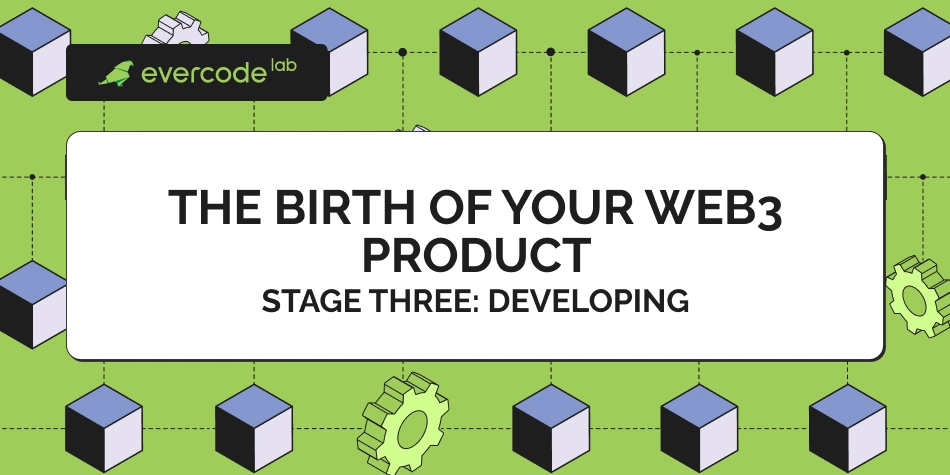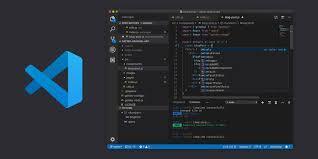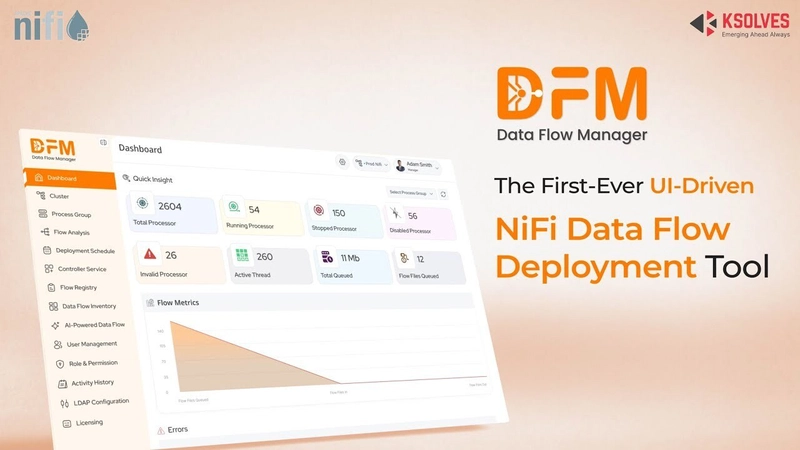The Future of Open Source Blockchain Innovation: Unraveling Stellar-Java's Role in Funding, Community & Technical Excellence
Abstract In this post, we explore Stellar-Java as more than just a Java SDK for the Stellar network. We review its open source funding models, community governance, technical innovation, and real-world use cases. By taking a closer look at the Apache 2.0 licensing model, sustainable funding strategies—including community sponsorship, token-based funding, and institutional grants—and the vibrant ecosystem surrounding Stellar-Java, this article provides an informed overview of how modern blockchain projects are built for financial inclusion and technical excellence. We also compare Stellar-Java with related projects and include insights from expert dev.to posts to round out our discussion. Introduction Stellar-Java is at the forefront of blockchain innovation. Serving as a key Java SDK for the Stellar network, it bridges the gap between seasoned Java developers and the cutting-edge world of blockchain technology. Stellar-Java empowers developers to build robust, secure, and innovative financial applications. Moreover, its technological prowess is matched by a sustainable open source funding model and active, community-led governance. This article explains why Stellar-Java matters in today’s fintech landscape and provides an in-depth look at its technical underpinnings, funding strategies, and community dynamics. Background and Context A Brief History of Stellar and Open Source Blockchain Libraries The Stellar network was originally launched by the Stellar Development Foundation with the aim of providing fast, low-cost cross-border payments and financial inclusion. Stellar-Java was developed as a blockchain library to help developers more easily interact with Stellar’s distributed ledger technology using Java, one of the world’s most widely used programming languages. Open source has revolutionized software development. With a permissive license like Apache 2.0, projects such as Stellar-Java allow modifications, commercial use, redistribution, and extensive collaboration. This model encourages both community-driven contributions and institutional backing. In related articles like Best Open Source License and community sponsorship guides such as How to Get Sponsored for Open Source, developers are given a blueprint of how open source projects can thrive financially and operationally. Ecosystem Context The blockchain space today is characterized by vibrant communities and multiple funding streams. Developers use platforms like GitHub Sponsors and decentralized tools to secure funding and support. Projects are no longer purely volunteer-driven. Instead, they combine traditional grant models with innovative crypto-based funding, ensuring projects like Stellar-Java maintain rapid development and high security. The use of blockchain for open source funding is discussed in detail in guides like Open Source Funding for Tech Projects. Core Concepts and Features Stellar-Java stands out for its blend of technical robustness and innovative open source practices. In this section, we highlight the key core concepts and features that define the project. 1. Open Source Licensing and the Apache 2.0 Model Key Benefits of Apache 2.0: Permissive Distribution: Allows developers to modify and distribute code with minimal restrictions. Commercial Use: Companies can incorporate the library into commercial projects without extensive legal hurdles. Community Trust: The transparent and well-understood nature of Apache 2.0 builds confidence among developers and corporate sponsors. These advantages enable Stellar-Java to maintain a competitive edge over more restrictive blockchain libraries. For further details on licensing nuances, refer to Best Open Source License. 2. Robust Developer Tools and API Integration Stellar-Java offers an extensive set of developer tools designed to: Manage Wallets: Easily integrate wallet functionality. Sign Transactions: Securely sign and manage blockchain transactions. Handle Errors: Provide robust error handling for smoother integration with external systems. This comprehensive toolkit facilitates a smoother development process, ensuring developers can build on Stellar’s robust features while focusing on innovative applications. Below is a table summarizing key tools and features: Feature Description Benefit Wallet Management Tools to create and manage digital wallets Simplifies financial application design Transaction Signing Secure, cryptographic signing of transactions Enhances security and trust Error Handling Robust error detection and reporting mechanisms Reduces development and maintenance time 3. Community-Led Governance and Funding Models Stellar-Java is a shining example of how community involvement drives open source projects forward. Several funding methods support its development, including: Community Sponsorship: Developers and enthusiasts contribute mon

Abstract
In this post, we explore Stellar-Java as more than just a Java SDK for the Stellar network. We review its open source funding models, community governance, technical innovation, and real-world use cases. By taking a closer look at the Apache 2.0 licensing model, sustainable funding strategies—including community sponsorship, token-based funding, and institutional grants—and the vibrant ecosystem surrounding Stellar-Java, this article provides an informed overview of how modern blockchain projects are built for financial inclusion and technical excellence. We also compare Stellar-Java with related projects and include insights from expert dev.to posts to round out our discussion.
Introduction
Stellar-Java is at the forefront of blockchain innovation. Serving as a key Java SDK for the Stellar network, it bridges the gap between seasoned Java developers and the cutting-edge world of blockchain technology. Stellar-Java empowers developers to build robust, secure, and innovative financial applications. Moreover, its technological prowess is matched by a sustainable open source funding model and active, community-led governance. This article explains why Stellar-Java matters in today’s fintech landscape and provides an in-depth look at its technical underpinnings, funding strategies, and community dynamics.
Background and Context
A Brief History of Stellar and Open Source Blockchain Libraries
The Stellar network was originally launched by the Stellar Development Foundation with the aim of providing fast, low-cost cross-border payments and financial inclusion. Stellar-Java was developed as a blockchain library to help developers more easily interact with Stellar’s distributed ledger technology using Java, one of the world’s most widely used programming languages.
Open source has revolutionized software development. With a permissive license like Apache 2.0, projects such as Stellar-Java allow modifications, commercial use, redistribution, and extensive collaboration. This model encourages both community-driven contributions and institutional backing. In related articles like Best Open Source License and community sponsorship guides such as How to Get Sponsored for Open Source, developers are given a blueprint of how open source projects can thrive financially and operationally.
Ecosystem Context
The blockchain space today is characterized by vibrant communities and multiple funding streams. Developers use platforms like GitHub Sponsors and decentralized tools to secure funding and support. Projects are no longer purely volunteer-driven. Instead, they combine traditional grant models with innovative crypto-based funding, ensuring projects like Stellar-Java maintain rapid development and high security. The use of blockchain for open source funding is discussed in detail in guides like Open Source Funding for Tech Projects.
Core Concepts and Features
Stellar-Java stands out for its blend of technical robustness and innovative open source practices. In this section, we highlight the key core concepts and features that define the project.
1. Open Source Licensing and the Apache 2.0 Model
Key Benefits of Apache 2.0:
- Permissive Distribution: Allows developers to modify and distribute code with minimal restrictions.
- Commercial Use: Companies can incorporate the library into commercial projects without extensive legal hurdles.
- Community Trust: The transparent and well-understood nature of Apache 2.0 builds confidence among developers and corporate sponsors.
These advantages enable Stellar-Java to maintain a competitive edge over more restrictive blockchain libraries. For further details on licensing nuances, refer to Best Open Source License.
2. Robust Developer Tools and API Integration
Stellar-Java offers an extensive set of developer tools designed to:
- Manage Wallets: Easily integrate wallet functionality.
- Sign Transactions: Securely sign and manage blockchain transactions.
- Handle Errors: Provide robust error handling for smoother integration with external systems.
This comprehensive toolkit facilitates a smoother development process, ensuring developers can build on Stellar’s robust features while focusing on innovative applications. Below is a table summarizing key tools and features:
| Feature | Description | Benefit |
|---|---|---|
| Wallet Management | Tools to create and manage digital wallets | Simplifies financial application design |
| Transaction Signing | Secure, cryptographic signing of transactions | Enhances security and trust |
| Error Handling | Robust error detection and reporting mechanisms | Reduces development and maintenance time |
3. Community-Led Governance and Funding Models
Stellar-Java is a shining example of how community involvement drives open source projects forward. Several funding methods support its development, including:
- Community Sponsorship: Developers and enthusiasts contribute monthly via platforms such as GitHub Sponsors.
- Token-Based Funding: Incorporates blockchain’s inherent transparency with smart contracts and token incentives. More detailed models are available in the NFT Treasure Tokenomics guide.
- Institutional and Corporate Grants: Major institutions and companies recognize the value of innovative projects that drive financial inclusion.
A bullet list summing the funding channels:
- Community Sponsorship and Direct Donations
- Cryptocurrency and Token-Based Models
- Corporate and Institutional Grants
This diversified approach not only strengthens financial stability but also encourages regular contributions and innovation.
Applications and Use Cases
Stellar-Java is designed to support a wide range of applications that promote financial inclusion and innovative blockchain solutions. Here are a few practical examples:
1. Cross-Border Payments and Remittances
Developers use Stellar-Java to build applications that enable fast and cost-effective international money transfers. Such solutions are crucial for underserved communities that rely on remittance services. By leveraging Stellar’s low transaction fees, these applications ensure funds can be transferred globally without prohibitive costs.
2. Decentralized Finance (DeFi) Platforms
Stellar-Java forms the technical backbone for DeFi platforms by providing secure APIs for managing smart contracts, tokenization, and payment channels. These platforms allow users to access financial services without traditional intermediaries. The innovative use of blockchain in DeFi is thoroughly covered in resources like Blockchain for Cross Border Payments.
3. Micro-Financing and Financial Inclusion
Financial startups and NGOs are deploying Stellar-Java to create solutions that target micro-financing. By enabling transparent and auditable financial transactions, these solutions empower small-scale entrepreneurs and facilitate inclusive economic growth.
Challenges and Limitations
No technology is without its challenges. Stellar-Java grapples with several hurdles related to technical and adoption issues:
1. Technical Complexity
While the library is robust, integrating it into legacy systems or new innovative platforms may sometimes require a steep learning curve. Developers must pay close attention to security protocols and data integrity, especially in scenarios involving financial transactions.
2. Funding Volatility
Innovative funding models based on cryptocurrencies can be susceptible to market fluctuations. Although the diversification of funding channels helps, ensuring sustainability remains a constant challenge for many blockchain projects.
3. Community Governance and Coordination
Open source projects often encounter difficulties when balancing diverse community opinions and maintaining coherent decision-making processes. Stellar-Java has taken steps towards community-led governance, but coordinating contributions from volunteers and professional developers simultaneously can sometimes delay rapid innovation cycles.
4. Interoperability Challenges
Stellar-Java’s focus on the Stellar network means integration with other blockchain networks or traditional systems can sometimes be limited. As blockchain ecosystems continue to expand, ensuring interoperability with platforms such as Ethereum or Arbitrum remains an ongoing technical challenge. Insights on interoperability can be found in articles like Arbitrum and Blockchain Interoperability.
Future Outlook and Innovations
The future of Stellar-Java and open source blockchain technology looks promising. Here are several trends and anticipated advancements:
1. Enhanced Cross-Platform Integration
Innovations in interoperability techniques will enable Stellar-Java to work seamlessly across different blockchain networks. This convergence will expand the scope of use cases, facilitating more integrated DeFi and cross-border payment systems.
2. Advancements in Community-Driven Governance
Expect a deeper integration of community-led decision-making models, along with sophisticated token-based governance frameworks that reward contributors. New research on open source project revenue strategies suggests that well-designed incentive models will lead to even more resilient projects.
3. Adoption of AI-Driven Development Tools
Integrating AI in debugging, code optimization, and automated testing will improve code quality and reduce vulnerability risks. Open source projects are already pioneering ways to leverage AI for technical enhancements, thus accelerating innovation.
4. Expansion of Blockchain Funding Models
As blockchain ecosystems mature, we will see expanded and more stable funding methods, including venture capital, decentralized autonomous organizations (DAOs), and alternate cryptocurrency models. These funding models, discussed in depth in Funding for Blockchain Security Projects, will ensure that projects like Stellar-Java remain agile and sustainable even during market fluctuations.
5. Industry Collaborations and Standardization
Continued collaboration between academic institutions, industry giants, and blockchain enthusiasts will pave the way for global standards in blockchain technology. This will not only boost the credibility of projects like Stellar-Java but also foster an ecosystem where open standards drive innovation.
Integration With Related Projects and External Resources
Stellar-Java’s influence extends beyond its immediate environment. It works in conjunction with similar projects and benefits from a broader collaborative ecosystem. For instance:
- Arbitrum Collaboration: Learn more about how blockchain projects are merging open source funding with advanced interoperability in this Arbitrum and Open Source Scaling Solutions discussion.
- EOS-Java and Beyond: For a comparison of different blockchain libraries, consider reviews such as Unlocking Innovation with EOS-Java which explores similar technologies.
- Community Engagement Models: For insights on successful volunteer contributions and sponsorship models, explore Open Source Sponsorship Models and related resources from dev.to posts by experts like Rachellovestowrite.
Summary
In summary, Stellar-Java is far more than a simple Java SDK for the Stellar network—it embodies the future of open source innovation in blockchain technology. Its blend of technical excellence, supported by comprehensive developer tools, secure transaction handling, and clear API integration, lays a robust foundation for building inclusive financial applications.
By embracing the permissive Apache 2.0 license, Stellar-Java fosters an environment of trust and collaboration. Innovative funding strategies including community sponsorship, token-based mechanisms, and institutional grants ensure that the project remains sustainable and agile. While challenges such as technical complexity, funding volatility, and governance coordination persist, the future outlook remains positive thanks to anticipated advances in cross-platform integration, AI-assisted development, and industry standardization.
Key Takeaways (Bullet List):
- Technical Robustness: Stellar-Java provides a secure, feature-rich API for interacting with the Stellar network.
- Open Source Funding: Multiple funding models enhance sustainability and innovation.
- Community-Led Governance: Transparent and merit-based decision-making empowers global contributions.
- Future Innovations: Enhanced interoperability, AI tools, and standardized industry practices will drive continued success.
For those interested in the intricate ecosystem behind Stellar-Java, the Original Article on Stellar-Java: The Open Source Business Model, Funding, and Community provides a comprehensive baseline for understanding this transformative project.
Whether you are a developer eager to build applications on the Stellar network or an investor looking to understand the future of blockchain-enabled financial inclusion, Stellar-Java stands as a case study in how open source, community engagement, and advanced technical design can converge to shape the future of digital finance.
By understanding and embracing these core principles, innovators can drive meaningful improvements in both the technology and the funding models that support it. As technological trends evolve, projects like Stellar-Java will not only lead the way in secure, efficient blockchain integration but will also redefine global financial ecosystems—providing accessible solutions to underserved communities around the world.
Final Thoughts
Stellar-Java remains a beacon of innovation in the blockchain space, illustrating how transparent, community-driven development and modern funding strategies can accelerate technological progress. With robust tools, consistent updates, and a strong network of contributors, Stellar-Java is set to remain at the forefront of blockchain application development.
The synthesis of open source best practices with cutting-edge funding and governance models further cements its role as a catalyst for financial inclusion and technical excellence. As the blockchain community looks ahead, initiatives like Stellar-Java will undoubtedly inspire a new generation of developers and entrepreneurs to embrace both creativity and sustainability.
For additional insights into open source funding and community-driven innovation, check out related resources such as Open Source Project Sponsorship Models and dive into discussions on platforms like dev.to where experts share their experiences and strategies in projects similar to Stellar-Java.
In closing, the future of open source blockchain technology is bright. Embracing projects like Stellar-Java not only accelerates innovation but also fosters a collaborative, inclusive, and sustainable digital economy.
Happy coding and innovating!




























![Gurman: First Foldable iPhone 'Should Be on the Market by 2027' [Updated]](https://images.macrumors.com/t/7O_4ilWjMpNSXf1pIBM37P_dKgU=/2500x/article-new/2025/03/Foldable-iPhone-2023-Feature-Homescreen.jpg)










































![Apple Shares 'Last Scene' Short Film Shot on iPhone 16 Pro [Video]](https://www.iclarified.com/images/news/97289/97289/97289-640.jpg)
![Apple M4 MacBook Air Hits New All-Time Low of $824 [Deal]](https://www.iclarified.com/images/news/97288/97288/97288-640.jpg)
![An Apple Product Renaissance Is on the Way [Gurman]](https://www.iclarified.com/images/news/97286/97286/97286-640.jpg)
![Apple to Sync Captive Wi-Fi Logins Across iPhone, iPad, and Mac [Report]](https://www.iclarified.com/images/news/97284/97284/97284-640.jpg)













![What Google Messages features are rolling out [May 2025]](https://i0.wp.com/9to5google.com/wp-content/uploads/sites/4/2023/12/google-messages-name-cover.png?resize=1200%2C628&quality=82&strip=all&ssl=1)
![[Fixed] Gemini 2.5 Flash missing file upload for free app users](https://i0.wp.com/9to5google.com/wp-content/uploads/sites/4/2025/03/google-gemini-workspace-1.jpg?resize=1200%2C628&quality=82&strip=all&ssl=1)























































































































































































































































































































































































![Ditching a Microsoft Job to Enter Startup Purgatory with Lonewolf Engineer Sam Crombie [Podcast #171]](https://cdn.hashnode.com/res/hashnode/image/upload/v1746753508177/0cd57f66-fdb0-4972-b285-1443a7db39fc.png?#)





![[DEALS] Internxt Cloud Storage Lifetime Subscription: 10TB Plan (88% off) & Other Deals Up To 98% Off – Offers End Soon!](https://www.javacodegeeks.com/wp-content/uploads/2012/12/jcg-logo.jpg)




















-Tony-Hawk's™-Pro-Skater™-3-+-4-Reveal-Trailer-00-00-27.png?width=1920&height=1920&fit=bounds&quality=70&format=jpg&auto=webp#)

.png?width=1920&height=1920&fit=bounds&quality=70&format=jpg&auto=webp#)



































































